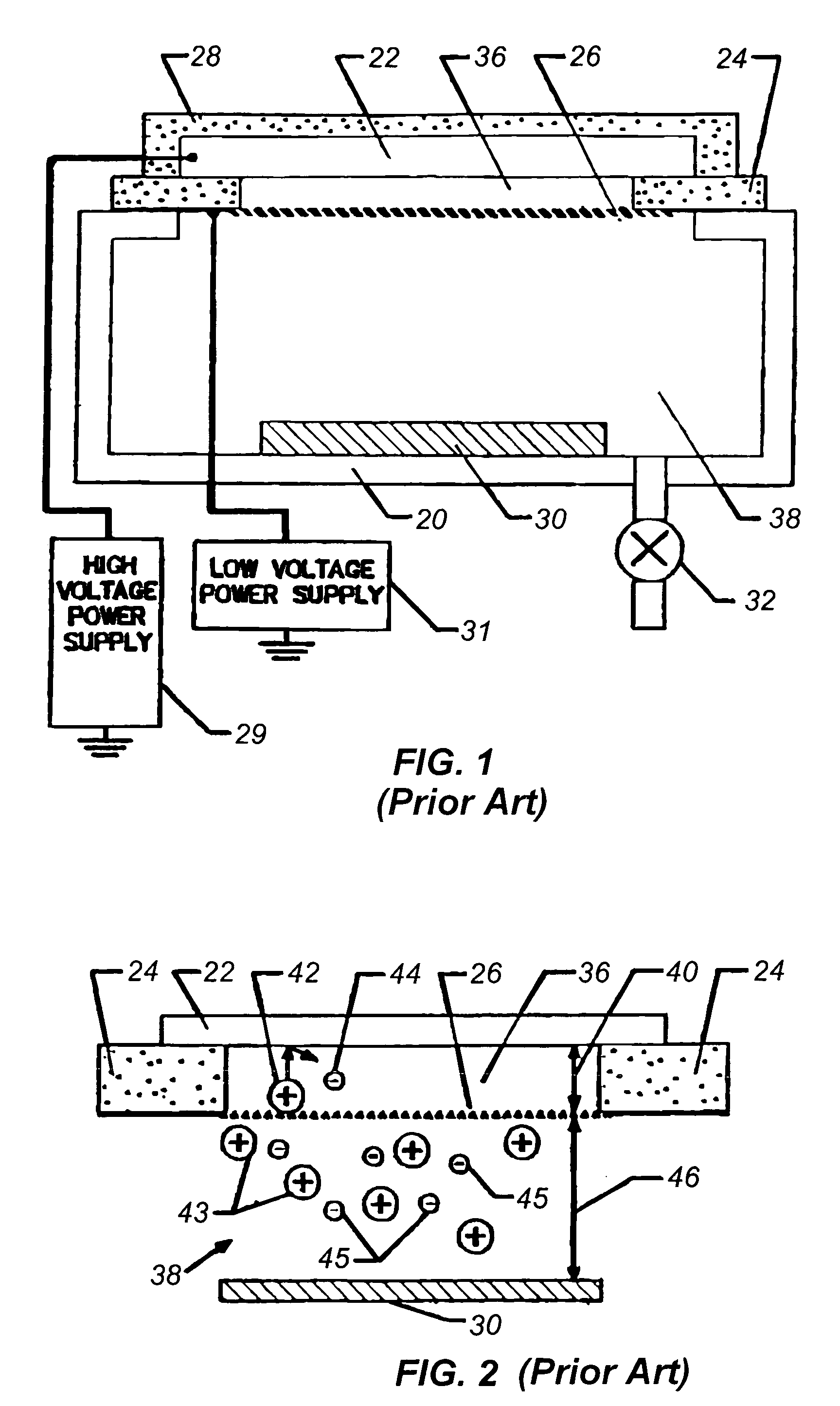Method and apparatus for reducing charge density on a dielectric coated substrate after exposure to a large area electron beam
a dielectric coated substrate and electron beam technology, applied in the field of dielectric coated substrate charge density reduction after exposure to a large area electron beam, can solve the problems of high rc time constants, and unsatisfactory coupling of electrical signals, so as to reduce the charge damage of substrates, reduce the charge damage, the effect of reducing the charge damag
- Summary
- Abstract
- Description
- Claims
- Application Information
AI Technical Summary
Benefits of technology
Problems solved by technology
Method used
Image
Examples
Embodiment Construction
[0032] Embodiments of the present invention relate generally to semiconductor processing. Particular embodiments provide a method and structure to control charge buildup in dielectric films. Merely by way of example, the invention has been applied to reducing charge buildup in dielectric films after exposure to radiation from a large area electron beam. The method and structure can be applied to other applications including, but not limited to, the control of charge buildup in other materials, such as semiconductor materials, composite semiconductor / dielectric materials, and the like.
[0033] U.S. Pat. No. 5,003,178, incorporated herein by reference for all purposes, describes a design for a large-area uniform electron source. The following additional U.S. patents, describing various applications for electron beam processing, are also incorporated hereby by reference: U.S. Pat. No. 5,468,595, U.S. Pat. No. 6,132,814, U.S. Pat. No. 6,204,201, U.S. Pat. No. 6,207,555, U.S. Pat. No. 6,2...
PUM
 Login to View More
Login to View More Abstract
Description
Claims
Application Information
 Login to View More
Login to View More - R&D
- Intellectual Property
- Life Sciences
- Materials
- Tech Scout
- Unparalleled Data Quality
- Higher Quality Content
- 60% Fewer Hallucinations
Browse by: Latest US Patents, China's latest patents, Technical Efficacy Thesaurus, Application Domain, Technology Topic, Popular Technical Reports.
© 2025 PatSnap. All rights reserved.Legal|Privacy policy|Modern Slavery Act Transparency Statement|Sitemap|About US| Contact US: help@patsnap.com



